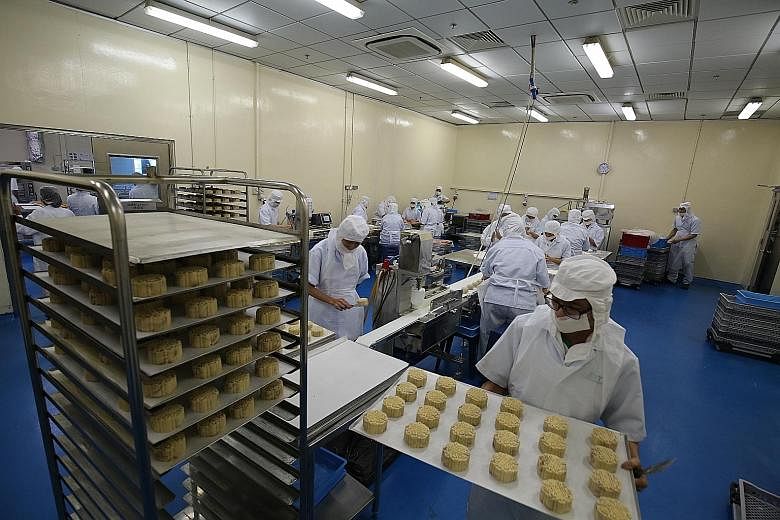Desserts, drinks and sauces with less sugar will be making their way into eateries, as part of the Government's efforts to fight diabetes.
More food manufacturers are creating products that skimp on refined sugars but use natural sweeteners as a supplement to avoid compromising on taste.
This is thanks to the Healthier Ingredient Development Scheme, which was launched in July last year to encourage manufacturers to create healthier staple foods.
The scheme was extended in May to support the production of desserts, sauces and beverages with less sugar as part of the Health Promotion Board's (HPB) efforts to cut the sugar in Singaporeans' diet by 25 per cent by 2020.
Since then, four manufacturers have tapped the grant to develop and market products with less sugar, which include mooncakes, ice cream and Asian beverages.
-
$7m
Total amount in grant applications supported by the Healthier Ingredient Development Scheme since its launch in July last year.
3,000
Number of F&B outlets where over 50 healthier products are available.
Giving an update on the scheme yesterday, HPB chief executive Zee Yoong Kang told reporters that the scheme has supported 26 grant applications, totalling about $7 million, since its launch. This is a fifth of the $35 million in funding to be disbursed over three years.
More than 50 healthier products are now available at some 3,000 food and beverage outlets across the island, though more must be done to reduce the consumption of sugary food and drinks, particularly in the food services sector, he said.
"We want to spread the message (to F&B operators) that by joining the healthier foods trend, you're going to increase your sales because people out there want these options," Mr Zee said.
He was speaking on the sidelines of a media tour of Chinese restaurant chain TungLok's production facility in Sembawang.
TungLok tapped the grant to develop mooncakes that have about 30 per cent less sugar and calories, and 40 per cent less saturated fat.
About 80 per cent of the mooncakes now sold at its restaurants are lower in sugar. Some of the refined sugar has been replaced with allulose, a low-calorie and low-glycaemic index sugar found naturally in fruits.
TungLok's chief executive Andrew Tjioe said it took about nine months and more than 20 rounds of trials to develop the healthier version. Boxes of its mooncakes are between $2 and $4 more expensive this year, though Mr Tjioe said this is mainly due to packaging costs.
A low-sugar version of the restaurant's nian gao, or sticky rice cake, was introduced earlier this year, and sales have increased by 30 per cent, he said.
"This means that the market is ready to accept this lower-sugar option as long as you give them something that doesn't compromise the sensory experience," said Mr Tjioe, adding that efforts are ongoing to further reduce the sugar content in its mooncakes and all desserts in TungLok restaurants.
Local manufacturer Faesol, which produces a range of ready-to-mix Asian beverages including water chestnut and roselle tea that contain about half the amount of sugar compared with the same syrup-based drinks, also received a grant from the scheme.
The firm's chief executive Saw Lin Kiat told The Straits Times that there are plans to expand its distribution to about 200 more locations over the next year, including coffee shops, cafes and restaurants. The powdered product, which replaces some of the sugar with sweeteners like stevia, may cost consumers up to 20 cents more a cup as it is more expensive than low-cost flavoured syrups that are high in sugar.
But Dr Saw believes it is a price consumers are willing to pay, saying: "The operators are often worried that they will lose sales if they switch to low-sugar (options)... We want to let them taste and see that it's the same."


